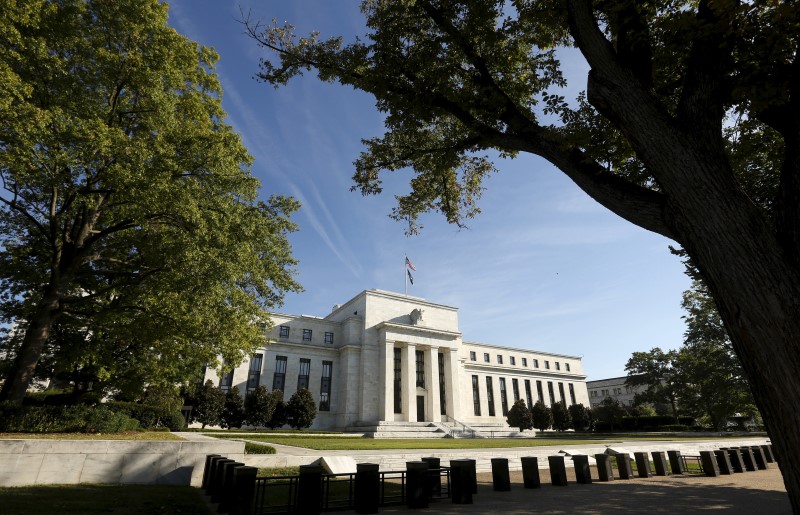By Lindsay Dunsmuir and Jason Lange
WASHINGTON (Reuters) - All of the Federal Reserve's policymakers felt that the U.S. economy would firm further and that inflation would rise in the coming months, minutes of the central bank's last policy meeting on March 20-21 released on Wednesday showed.
The readout of the meeting, at which the Fed unanimously voted to raise borrowing costs by a quarter percentage point, also showed that policymakers were wary about the impact of the Trump administration's trade and fiscal policies.
"All participants agreed that the outlook for the economy beyond the current quarter had strengthened in recent months," the Fed said in the minutes. "In addition, all participants expected inflation on a 12-month basis to move up in coming months."
U.S. stocks, Treasuries and the dollar were little changed following their publication.
"From a market sense there's not much for people to take away here, they are still looking for a gradual pace of hikes. I think the debate rages on whether that means three this year of four this year," said Gennadiy Goldberg, an interest rates strategist at TD Securities in New York.
The Fed's target range for its benchmark lending rate is currently between 1.50 and 1.75 percent. The increase in March was the sixth rise since the central bank began a tightening cycle back in December 2015.
As the economy has strengthened, the Fed has upped the pace of hikes. It sees another two rate rises this year, although quarterly forecasts at the last meeting showed more officials than in December were supportive of three more hikes in 2018.
The Fed's preferred measure of inflation currently sits at 1.6 percent and has undershot its 2 percent target rate for six years but various indicators have recently pointed to an uptick in price pressures.
Policymakers also see additional impetus from an economy in which the labor market is tightening, the dollar weakening and the stimulus from a $1.5 trillion income tax cut package and increased government spending yet to impact on the economy.
Earlier on Wednesday, one of the Fed's key measures of consumer prices, the so-called core CPI, rose 2.1 percent year-on-year in March, the largest advance since February 2017, after increasing 1.8 percent in February.
U.S. TRADE POLICY WORRIES
Fed Chairman Jerome Powell said last Friday that the central bank would likely need to keep raising rates to keep inflation under control, but also pledged to stick to a gradual path.
However, the meeting minutes showed that already some Fed officials worried the central bank would have to move faster than previously expected.
A number said the outlook for the economy and inflation could lead to a slightly steeper path of rate increases over the next few years and some suggested that at a given point the Fed might have to change its statement language to acknowledge monetary policy would have to move to a neutral or "restraining factor" for economic activity.
Several thought it would likely also become appropriate at some point for interest rates to rise above the Fed's longer-run estimate for a time.
One potential headache for Fed officials remains threats of tit-for-tat tariffs worth tens of billions of dollars between the Trump administration and China, which if implemented could damage U.S. growth and raise consumer prices. Those tensions have roiled financial markets over potential damage to global growth.
In the minutes, Fed policymakers showed concern about this as well as uncertainty about the implication of Trump's stimulus on fiscal sustainability and real interest rates.
"A strong majority of participants viewed the prospect of retaliatory trade actions by other countries, as well as other issues and uncertainties associated with trade policies, as downside risks for the U.S. economy," the minutes read.
Since the March meeting, Fed officials have largely adopted a wait-and-see attitude to trade policy, noting it is not yet clear if the tariffs will go into effect and their eventual size if implemented.
The Fed is expected to keep rates unchanged at its next policy meeting on May 1-2, but investors overwhelmingly see another rate increase at the following one in mid June.

